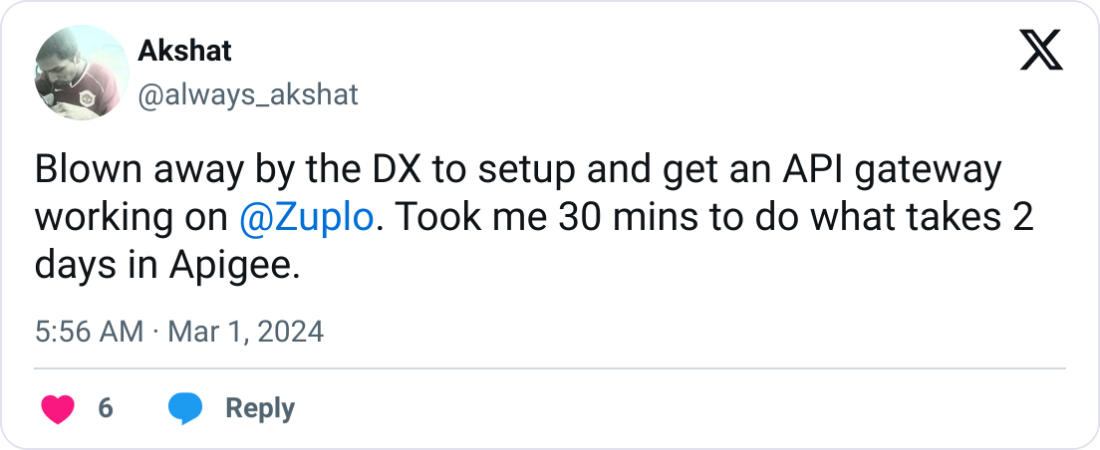APIs are the backbone of today's digital world, connecting everything from fintech apps to smart home gadgets. With APIs powering virtually every digital experience, knowing how to set up an API security framework isn't just nice-to-have—it's make-or-break for your business. As attackers increasingly target these critical interfaces, a well-designed security approach both protects your data and enables innovation.
Let's dive into building a comprehensive API security framework that anticipates threats rather than reacting to them, creating multiple layers of protection while maintaining performance. Think of it as your API's personal bodyguard—always alert, thoroughly trained, and ready to shut down trouble before it starts.
- The Alarming Rise of API Security Threats
- Striking the Perfect Balance: Security Without Sacrificing Speed
- The Dream Team: Who Makes API Security Happen
- Laying the Groundwork: Before You Build
- Building Your Fortress: Foundation First
- Beyond Basics: Adding Detection and Response
- Security Testing and Developer Education
- Future-Proofing Your Security Framework
- From Framework to Practice
The Alarming Rise of API Security Threats#
According to a recent Akamai State of the Internet report, 108 billion API attacks were recorded from January 2023 through June 2024 alone. Even more concerning, 84% of organizations reported experiencing an API security incident in the past 12 months—up from 78% the previous year. Holy smokes.
Clearly, the bad guys are getting smarter and working overtime. BOLA (Broken Object Level Authorization) attacks remain the crown jewel of API vulnerabilities, letting attackers waltz right in and access unauthorized data by simply tweaking object IDs. Other popular party tricks include busted authentication, injection attacks, excessive data exposure, and rate limiting that's about as effective as a screen door on a submarine.
Striking the Perfect Balance: Security Without Sacrificing Speed#
Finding the sweet spot between iron-clad security and blazing performance is pretty much an art form. Nobody wants security that turns their lightning-fast API into a sluggish mess that frustrates developers and users alike.
Smart frameworks use clever strategies like intelligent caching, distributed rate limiting, and streamlined authentication flows to keep things secure without killing performance. Here's a truth bomb for you: Caching is your API's secret weapon. By storing frequently requested data closer to where it's needed, you'll slash response times while freeing up resources for other requests. Win-win!
The Dream Team: Who Makes API Security Happen#
Securing APIs isn't a one-person show—it demands an all-star cast working in perfect harmony. Let's dive into the key players who make it all work.
Development Teams#
Your developers build the foundation of secure APIs from day one, baking in security rather than bolting it on later. They're your first line of defense, implementing proper authentication, authorization, and input validation.
Security Professionals#
These paranoid (in a good way!) experts bring specialized knowledge in threat modeling and vulnerability assessment. They ask "what if?" questions when everyone else assumes things are fine.
Product Managers#
Balancing business needs with security requirements, product managers ensure security enhances rather than hinders the product vision. They prioritize security features alongside user-facing functionality.
Technical Leadership#
Setting governance structures and championing security initiatives, tech leaders make security a priority. They allocate resources and establish a security-first culture.
Operations Teams#
Maintaining infrastructure without compromising performance, ops teams keep everything running smoothly while maintaining security guardrails. They implement monitoring and respond to security events.
When these groups collaborate around a common framework, you create a security approach that enables innovation rather than strangling it.
Laying the Groundwork: Before You Build#

Before diving into implementation, you need to know what you're working with. Here’s how to get started with an assessment phase that sets you up for success.
Auditing Your Current API Ecosystem#
Let's start with a brutal truth: most organizations have no idea how many APIs they actually have. Shadow APIs are lurking everywhere, and you can't secure what you don't know exists.
- Start by implementing automated discovery tools like Salt Security, 42Crunch, or Akto to scan your network and find those hidden APIs. Cross-reference what you find against your documentation and gateway configurations. Ideally get all of them into an OpenAPI document, and audit their designs using scoring tools like RateMyOpenAPI.
- When documenting your API inventory, include each API's name, purpose, owner, authentication methods, data sensitivity, and current security controls. This inventory becomes the foundation of your entire security strategy.
- And remember, this isn't a one-time effort. Continuous discovery is essential as your API landscape grows like weeds after a spring rain. Tools like RateMyOpenAPI integrate with your CI pipelines to continuously audit your API for security issues like those in the OWASP Top 10.
Conducting a Security Gap Analysis#
Once you've mapped your API universe, it's time to see where your security falls short. Create a gap analysis matrix comparing your current state against desired security controls and standards like the OWASP API Top 10.
Prioritize vulnerabilities using a risk-based approach that considers data sensitivity, exposure level, potential impact, and exploitation likelihood. Don't try to boil the ocean—focus on your highest risks first, then work your way down the list.
Securing Stakeholder Buy-in for Your API Security Framework#
Now for the fun part—convincing the people with the money to invest in your API security framework. We've found that talking about technical vulnerabilities makes executives' eyes glaze over, but showing them potential losses wakes them right up.
- Develop a business case showing how API security creates ROI by quantifying potential breach costs and comparing them with implementation costs.
- Highlight business risks using real-world examples and statistics.
- Break your implementation plan into phases to make it digestible, focusing on outcomes rather than technical specs.
- Show how improved API security supports business objectives like customer trust, regulatory compliance, and protecting intellectual property.
- Align your framework with established security policies to demonstrate commitment to security standards.
Building Your Fortress: Foundation First#
Time to get our hands dirty! Phase 1 is all about laying down rock-solid security foundations. Let's dive into the essential API security practices that form your first line of defense.
Authentication Mechanisms Implementation#
Authentication is where the rubber meets the road in API security. Get this wrong, and nothing else matters—you're essentially leaving your front door wide open. Selecting appropriate API authentication methods is crucial.

Over 10,000 developers trust Zuplo to secure, document, and monetize their APIs
Learn MoreOAuth 2.0 Implementation#
OAuth 2.0 is the gold standard for API authentication. Implement it with short-lived access tokens (15–30 minutes) paired with longer-lived refresh tokens for the best balance of security and user experience.
// Sample OAuth 2.0 configuration
const passport = require("passport");
const OAuth2Strategy = require("passport-oauth2").Strategy;
passport.use(
new OAuth2Strategy(
{
authorizationURL: "https://provider.com/oauth2/authorize",
tokenURL: "https://provider.com/oauth2/token",
clientID: process.env.CLIENT_ID,
clientSecret: process.env.CLIENT_SECRET,
callbackURL: "https://yourdomain.com/auth/callback",
},
function (accessToken, refreshToken, profile, cb) {
// Verify user and store tokens securely
User.findOrCreate({ oauthId: profile.id }, function (err, user) {
return cb(err, user);
});
},
),
);To compare different authentication methods, refer to our API authentication comparison.
API Key Management#
For service-to-service communication, API keys offer a simpler alternative. Follow API key practices: never store them in plaintext, implement rotation policies, and use different keys for different environments.
Understanding the differences between JWT vs API keys can help you choose the right method for machine-to-machine APIs.
Multi-Factor Authentication (MFA)#
For APIs handling sensitive data, adding MFA provides that extra layer of protection. Document your MFA integration clearly and provide fallback options for legitimate users who might encounter MFA hiccups.
Authorization and Access Control Setup#
Authentication tells you who someone is—authorization determines what they can do. Implementing proper authorization ensures users only access what they're allowed to see. Effective RBAC can greatly aid in managing API permissions.
Role-Based Access Control (RBAC)#
RBAC assigns permissions based on roles rather than individuals, making access management way more scalable:
// RBAC middleware example
function checkRole(roles) {
return (req, res, next) => {
const userRole = req.user.role;
if (roles.includes(userRole)) {
next();
} else {
return res.status(403).json({ error: "Access forbidden" });
}
};
}Define clear role hierarchies, document permissions thoroughly, and regularly audit role assignments to ensure they follow the principle of least privilege. Monitoring RBAC analytics can help you track and improve your access control policies.
Attribute-Based Access Control (ABAC)#
When you need more sophisticated control, ABAC lets you make access decisions based on multiple factors like user attributes, resource properties, and environmental conditions. Start simple and expand as you better understand your access patterns.
API Gateway Configuration Best Practices#
Your API gateway is a critical security control point with essential API gateway features. Configure it properly with:
- TLS Configuration: Always enforce TLS 1.2+ with strong ciphers
- Rate Limiting: Implement rate limiting to protect against abuse and DoS attacks
- Request Validation: Reject malformed requests before they hit your backend services
Understanding the benefits of a hosted API gateway can help in making the right choice for your infrastructure.
Beyond Basics: Adding Detection and Response#

Understanding how to set up an API security framework isn't just about prevention. Let's dive into the monitoring and incident response capabilities that take your security to the next level.
Advanced Monitoring and Alerting Systems#
You can't defend against what you can't see. Comprehensive monitoring provides the visibility needed to detect and respond to threats in real-time.
Logging Strategy Implementation#
Effective logging creates an audit trail for both security analysis and compliance. Structure your logs in a consistent JSON format to make them machine-readable. Include request metadata, authentication details, resource accessed, action performed, and timestamps.
Implement log rotation and retention policies that balance security needs with storage costs. For high-security environments, consider pushing logs to write-once storage that prevents tampering.
Real-time Anomaly Detection#
Monitoring raw log data isn't enough—you need intelligent systems that spot unusual patterns. Machine learning models can establish baseline behavior and flag deviations. Start with simple statistical approaches before moving to complex ML models—sometimes basic threshold alerts on request volume or error rates can catch issues effectively.
SIEM Integration#
Security Information and Event Management (SIEM) systems provide centralized visibility. Popular options include Splunk, ELK Stack, and Sumo Logic. Create custom dashboards focusing on key security metrics and set up correlation rules that connect related events across your infrastructure.
Incident Response Planning#
When—not if—something goes wrong, you need a battle-tested response plan ready to go.
Defining Response Procedures#
Create clear, step-by-step procedures for common API security incidents, including:
- Initial assessment and containment
- Investigation and evidence collection
- Remediation and service restoration
- Post-incident analysis and improvement
Run regular tabletop exercises with your team to practice these procedures. Simulations uncover gaps in your response strategy and build muscle memory so your team doesn't freeze during a real crisis.
Automating Initial Response#
Some response actions can be automated to reduce reaction time, such as temporarily blocking IPs after multiple authentication failures, revoking compromised tokens, and throttling traffic during unusual activity spikes.
Be cautious with automation that might impact legitimate users. Always include manual review processes for serious actions and implement "break glass" procedures that allow overriding automated blocks in emergency situations.
Security Testing and Developer Education#
Great API security is verified, not assumed. Let's dive into how testing and education create a sustainable security posture.
Automated Security Scanning#
Integrate automated security scanning into your development pipeline using tools like RateMyOpenAPI, OWASP ZAP, Burp Suite, and other specialized API scanners. Run scans at multiple points in your development lifecycle: during development, in the CI/CD pipeline, and regularly in production.
Penetration Testing#
Even the best scanners can't replace human ingenuity. Regular penetration testing provides deeper analysis of your API security posture. Alternate between internal security team assessments and external penetration tests for the most comprehensive coverage.
Developer Education#
Security-aware developers create more secure APIs from the beginning. Develop clear, practical coding guidelines tailored to your technology stack and implement regular training programs including:
- Onboarding security sessions for new team members
- Annual refresher courses on evolving best practices
- Targeted workshops addressing specific vulnerabilities
- Security champions programs embedding expertise within development teams
Future-Proofing Your Security Framework#
The API security landscape never sits still. Let's dive into how you can create a framework that evolves with emerging threats and technologies.
Embracing Zero Trust Architecture#
Traditional security models assume everything inside your network is trustworthy. Zero Trust flips that assumption with principles like:
- Never Trust, Always Verify: Authenticate and authorize every request, regardless of origin
- Least Privilege Access: Grant the minimum permissions necessary for each operation
- Continuous Verification: Don't assume a session remains secure
- Contextual Authentication: Consider factors beyond credentials like request patterns and IP reputation
Leveraging AI for Adaptive Security#
AI takes your security beyond static rules to adaptive defense by identifying patterns too subtle for human analysis. Implement a hybrid approach combining AI analysis with human judgment for the best results.
Scaling Your Security Program#
As your API ecosystem grows, your security approach must scale accordingly:
- Implement security as code to define controls programmatically
- Use centralized policy management and effective API governance solutions for consistent enforcement across your API landscape
- Build security gates in your CI/CD pipeline to block vulnerable deployments
- Automate security testing and compliance verification
By future-proofing your security framework, you not only protect your services but also unlock opportunities for growth, such as AI API monetization.
From Framework to Practice#
Building a robust API security framework isn't a luxury—it's table stakes for modern digital businesses. The framework we've covered enables your organization to confidently expose valuable functionality through APIs while maintaining strong security guardrails.
Ready to turn theory into practice? Zuplo's developer-focused API gateway makes implementing many of these security controls straightforward and intuitive. With features like robust authentication, fine-grained access control, and comprehensive monitoring, Zuplo helps you create secure APIs without slowing down innovation. Sign up for a free Zuplo account today and take the first step toward bulletproof API security.